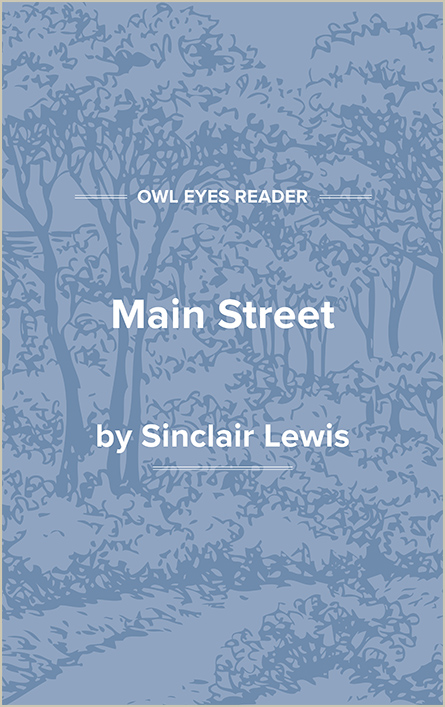Study Guide
Analysis Pages
Summary
Carol Milford, an attractive, eager librarian, marries Dr. Will Kennicott and comes to Gopher Prairie with every expectation of seeing the town through her husband’s eyes. Will, a character based to a great extent on the novelist’s father and brother Claude, both country doctors, is proud of Gopher Prairie and does not see clearly the faults which become so apparent to Carol almost at once. Carol Kennicott would like to change everything, from the dull buildings that line Main Street to the people who inhabit the houses, people whose interests in life are very narrow indeed. Will’s friends assume that Carol will “settle in” and embrace their values, and when she does not do so, they are quite disturbed.
Lewis constantly emphasizes the freedom of the countryside surrounding the town, so that nature, even in the midst of stormy winter, is preferable to the stultifying atmosphere of Gopher Prairie. Some of Carol’s happiest times are spent with her husband, tramping through the area, appreciating nature.
She tries various plans to “raise the cultural level” of the town. She gives well-planned parties, instead of the usual dull ones that seem to her to be funereal. She offers to use her skills as a librarian to upgrade The Thanatopsis, a ladies’ literary discussion group which specializes in brief summaries of the lives of great literary figures; she organizes a drama club to produce plays of more lasting merit than The Girl from Kankakee. She consistently fails.
Furthermore, she finds that even in Gopher Prairie, a village of about four thousand souls, there are strict notions of “social class,” prejudice against the Swedish and German immigrants, rigid notions about morals, anti-union feeling, an avid love of gossiping, and, above all, a sense of unremitting dullness.
Carol does find a few friends. There is Guy Pollock, a lawyer who at first seems to share her views of Gopher Prairie. There is her hired girl, Bea Sorenson, a young Swedish farm girl who (by contrasting it with Scandia Crossing, population sixty-seven) looks at Gopher Prairie as a big city. There is the town outcast, Miles Bjornstain, an independent “Red Swede” who marries Bea. There is Erik Valborg, a would-be artist/designer who works as a presser in a local tailor shop, and there is Fern Mullins, a young schoolteacher.
Yet each friendship comes to naught. Guy confesses that “village virus” has infected him even unto death; Miles loses his beloved Bea and their little son, Olaf, to death and leaves his farm to travel west; Erik becomes a small-time film actor; and Fern Mullins is forced to resign from school and is run out of town on a trumped-up morals charge based entirely on malicious gossip.
The Kennicotts have a son, Hugh, and for a while the child fills Carol’s life; however, even after she and Will have had an extended vacation in California, she finds that life in Gopher Prairie is intolerable. In addition to the faults Carol has found from the beginning, the town has succumbed to the new “booster” mentality, which has raised the price of land but has not raised the level of everyday life one iota.
With her husband’s reluctant approval, Carol and Hugh go to live in Washington, D.C., where she gets a job in the Bureau of War Risk Insurance. It is a first step toward her independence, but she finds a “thick streak of Main Street” even there. After a year, her husband comes to Washington; they take a short trip south, which Will calls a “second wooing,” and five months later, Carol decides to return to Gopher Prairie, pregnant with her daughter and determined to continue “the good fight.”
Lewis leaves little doubt about his opinion of Gopher Prairie and its faults, but the reader also sees that although Carol has good intentions from the beginning, she is not really focused on what changes she wants to make. She is somewhat immature. Perhaps her character represents the American woman of the postwar period...
(The entire page is 1,051 words.)
Owl Eyes subscribers get unlimited access to our expert annotations, analyses, and study guides on your favorite texts. Master the classics for less than $5/month!

